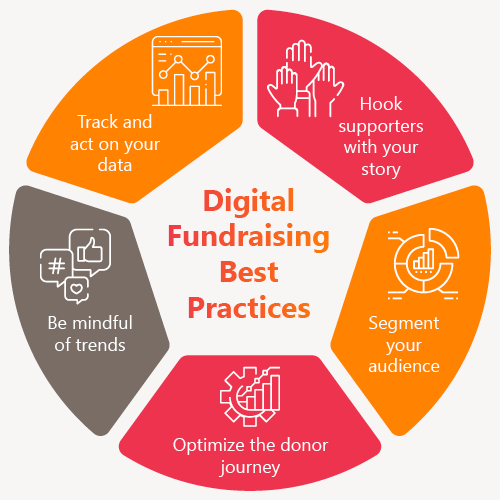Nonprofit Agency: Exactly How to Maximize Your Impact with Expert Advice
Wiki Article
The Role of Area Engagement in Nonprofit Fundraising: Structure Lasting Relationships for Sustainable Assistance
Area interaction is progressively recognized as a crucial component of effective not-for-profit fundraising. By promoting genuine partnerships with regional stakeholders, companies can grow depend on and loyalty, which are important for sustainable assistance. Nonetheless, the methods and approaches utilized to involve neighborhoods differ widely, increasing important concerns concerning efficiency and influence. What are the best techniques for cultivating these necessary connections, and exactly how can nonprofits gauge their success in this arena? Recognizing these dynamics might significantly affect the future of fundraising efforts and the total objective of nonprofit companies.Comprehending Area Involvement
Area engagement is a vital component of successful nonprofit fundraising efforts. It refers to the techniques and tasks that organizations use to link with their neighborhood communities, cultivating relationships that are equally advantageous. Comprehending neighborhood interaction includes recognizing its multifaceted nature, that includes participation, cooperation, and outreach. Nonprofits have to recognize crucial stakeholders-- such as neighborhood members, local businesses, and various other companies-- to produce effective involvement approaches.Effective area interaction is predicated on energetic listening and responsiveness to the requirements and rate of interests of the community. This procedure includes soliciting comments, understanding area dynamics, and ensuring that the organization's objective aligns with neighborhood concerns. Engaging the community can take different forms, including public meetings, volunteer possibilities, and partnership campaigns, each developed to urge involvement and financial investment in the organization's goals.
In addition, neighborhood involvement ought to be come close to as an ongoing dialogue instead than a single effort. By cultivating an inclusive atmosphere where area voices are heard and valued, nonprofits can construct a strong structure for future fundraising endeavors. Eventually, a deep understanding of area interaction encourages companies to create genuine links that enhance their general effectiveness and sustainability.
Benefits of Solid Relationships
Solid relationships developed with area interaction return countless benefits for nonprofit fundraising efforts. Most importantly, these partnerships foster trust and reputation, important parts in motivating benefactors to contribute. When prospective fans see a nonprofit actively associated with their area, they are most likely to rely on its objective and effect.
Additionally, these partnerships assist in effective interaction. Nonprofits can utilize their links to share tales of impact, updates, and requires, making certain that supporters remain informed and engaged. This open line of communication not only enhances bonds however additionally motivates word-of-mouth promo, broadening the not-for-profit's reach.
Lastly, solid community ties can bring in new partners and enrollers. Companies and people are more inclined to straighten with organizations that show purposeful community involvement, offering added resources and support that can dramatically improve fundraising capacities. Thus, cultivating durable partnerships through area engagement is essential to a not-for-profit's long-term fundraising success.
Techniques for Reliable Engagement
Exactly how can nonprofits successfully involve their communities to enhance fundraising efforts? Creating targeted strategies see this is necessary for fostering meaningful links. Initially, leveraging social media platforms allows companies to share their objective dynamically and interactively, reaching a wider target market. Normal updates, involving web content, and calls-to-action can galvanize community passion and engagement.Second, organizing area events, such as workshops, volunteer opportunities, or fundraising drives, promotes in person interaction, permitting nonprofits to display their impact and initiatives. These events not only elevate funds however also grow relationships and permit neighborhood members to involve directly with the reason.
Third, carrying out tailored interaction methods can improve engagement. Customizing messages to certain donor sections based on passions and past payments fosters a feeling of belonging and investment in the company's mission.
Last but not least, producing collaborations with regional businesses and area leaders can enhance outreach initiatives. Collaborative campaigns can enhance exposure and trustworthiness, demonstrating a collective dedication to the community's health. By integrating these strategies, nonprofits can develop lasting connections that enhance fundraising efforts and drive lasting support.
Gauging Interaction Success
While engaging the neighborhood is essential for effective not-for-profit fundraising, measuring the performance of these engagement initiatives is just as essential. Developing clear metrics allows companies to assess exactly how well they are attaching with their audience and accomplishing their fundraising objectives. Secret performance indicators (KPIs) such as contributor retention prices, volunteer engagement levels, and engagement on social media systems give substantial data for evaluation.
On a regular basis evaluating these metrics enables companies to pivot their techniques when necessary, ensuring that neighborhood engagement continues to be lined up with their overall goal. Moreover, sharing these results with stakeholders cultivates openness and builds trust, urging more community participation. Ultimately, a durable measurement framework not just informs future fundraising campaigns but additionally strengthens the connection in between the nonprofit and its advocates, preparing for sustainable success.
Study in Neighborhood Influence
Various study show the extensive impact that neighborhood involvement can carry not-for-profit fundraising success. One noteworthy instance is the "Something to chew on" initiative, where a local food bank partnered with services and institutions to host area suppers. These events not only increased funds yet additionally fostered a sense of belonging among individuals, significantly enhancing contributor retention prices.An additional compelling situation is the "Environment-friendly Spaces Job," which entailed regional homeowners in the revitalization of urban parks. This campaign not just garnered financial backing from local services however also cultivated a volunteer base that added to ongoing upkeep and programming. The important site feeling of ownership and satisfaction among community members equated right into sustained contributions.
In the realm of arts, the "Art for All" project efficiently engaged neighborhood musicians and clients to create collective art installations, causing increased exposure and donations for a regional arts nonprofit.
These instances highlight that when nonprofits prioritize neighborhood participation, they can create lasting relationships that boost fundraising efforts, making certain sustainable support and promoting a dynamic area culture. Such situations show that area involvement is not merely a method but an essential pillar of nonprofit success.
Final Thought
Finally, area interaction is essential to the success of not-for-profit fundraising efforts. By promoting strong partnerships with regional stakeholders, organizations enhance trust and reliability, leading to improved contributor retention and loyalty. Executing efficient engagement strategies and measuring their influence makes certain that nonprofits can adapt and thrive. Ultimately, a durable foundation of area support not just intensifies fundraising prospective but likewise grows a society of partnership, essential for accomplishing lasting business objectives and sustaining purposeful impact.Nonprofits need to recognize vital stakeholders-- such as neighborhood participants, local companies, and various other organizations-- to produce reliable interaction methods.

In conclusion, community involvement is integral to the success of not-for-profit fundraising efforts.
Report this wiki page